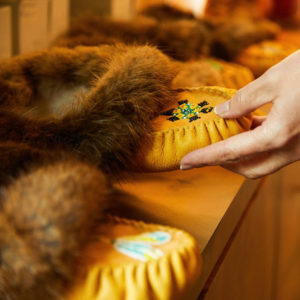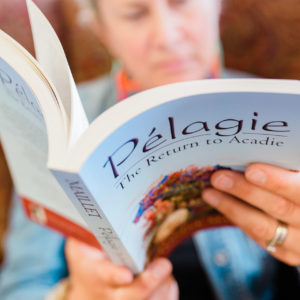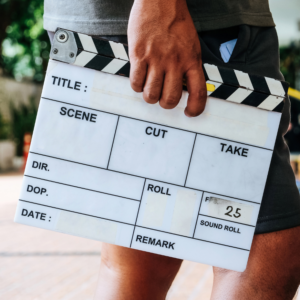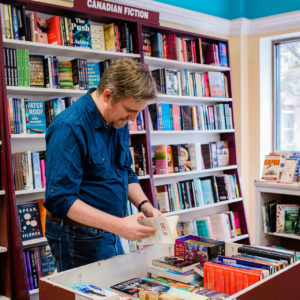
Norélice Mboutou

Norelice Mboutou, also known as "Lisy Lisy", is a versatile designer based in New Brunswick, Canada. Originally from the Republic of Congo, she discovered her passion for art alongside other artists. Her artistic journey began in her native country, where she acquired in-depth knowledge of painting and art techniques.
In 2009, Norelice moved to Moncton, N.B., to study electrical engineering. However, she soon discovered her passion for graphic design, a revelation that changed the course of her artistic career. She seized the opportunity to study graphic design at the Collège Communautaire du Nouveau-Brunswick, where she developed her skills and understanding of digital media.
Today, Norelice Mboutou juggles two artistic worlds, working full-time as a graphic designer and part-time as a painter. Two of her digital works, "Black HAIRitage" and "Black Community Gathered Together", have been selected for inclusion in New Brunswick Black Lives Matter's permanent art collection. This collection, in partnership with the New Brunswick College of Craft and Design, highlights inspiring artists and their contributions to the fight against discrimination.
Norelice's ultimate goal is to create works of art that are not only aesthetically beautiful, but also convey a strong and meaningful message. She aspires to provoke discussion and raise awareness, inviting the public to reflect on important issues. Each creation is an opportunity for her to share her thoughts, emotions and experiences with the world, in the hope of creating a constructive dialogue and fostering mutual understanding between people.
What led you to become an artist?
What led me to become an artist was my first artistic experience alongside other artists, such as Aurélie Diansayi, when I was living in the Congo. Her teaching of art and painting techniques awakened my passion for artistic expression. Although I originally studied electrical engineering in Moncton, my discovery of a love for graphic design redefined my artistic career.

How did your training and experience help you to create and innovate in your artistic practice?
My training in electrical engineering gave me technical precision and analytical thinking, skills that I apply to my art. My training in graphic design opened doors to the digital world, allowing me to explore innovative ways of expressing myself. These varied experiences contribute to my ability to create works that combine aesthetics, technique, and narrative.
What stimulates you most about your practice?
What stimulates me most is the possibility of creating works that transcend cultural boundaries and evoke emotions in the public. Exploring themes related to cultural identity, as in my exhibition "Black HAIRitage", gives me a platform to inspire reflection and promote self-acceptance. The idea that art can bring people together and spark meaningful discussions is what fuels my artistic passion on a daily basis.

How has living and working in New Brunswick helped and/or inspired you on your journey?
Living and working in New Brunswick has had a profound influence on my artistic development. The province's cultural diversity offered me new perspectives and sources of inspiration. My studies at the Collège Communautaire du Nouveau-Brunswick also played a key role in opening the doors to graphic design. The local arts community, as well as the opportunities offered by initiatives, strengthened my commitment to important social and cultural issues.
What motivates your creativity?
My creativity is fueled by two main sources of inspiration. First, my African heritage is a constant influence on my creations. The vibrant colours and intricate patterns associated with African art permeate my work, creating a harmonious fusion with my Canadian experiences. Secondly, the desire to provoke reflection and promote self-acceptance and cultural diversity drives my creativity. The idea that art can be a catalyst for meaningful discussion and social change drives me to explore deep and engaging themes.
How does your creative process unfold as you create an artwork?
My creative process is a fusion of in-depth research and artistic expression. It all begins with a meticulous exploration of the themes I wish to address, often based on stories, anecdotes, and historical facts. This research becomes the foundation on which I build my works.
I then embark on the creative process itself using digital art as a means of expression. Each work is meticulously constructed to visually represent a specific facet of the story I want to tell. Explanatory texts sometimes accompany my creations to offer a narrative dimension to viewers.
Inspiration may come from my own experience, from my observation of today's society, or from broader themes linked to cultural diversity and the fight against discrimination. My aim is to create works that transcend linguistic and cultural barriers, inviting the audience to reflect and engage emotionally with the message I wish to convey.

What is your long-term vision and what do you hope to achieve?
My long-term vision is to continue to evolve as an artist and deepen my involvement in projects that have a positive impact. I aspire to expand my artistic reach by collaborating with local and international artists, participating in community initiatives, and continuing to contribute to meaningful art collections. I hope my art will continue to be a means of raising awareness and creating constructive dialogue on important social and cultural issues.
What do you think is the impact of artists' work on communities and the province as a whole?
The work of artists has a profound impact on communities and the province of New Brunswick as a whole. These creators play an essential role in the social, economic, and cultural fabric of the region, contributing significantly to the province's quality of life and vitality.
In economic terms, the cultural industry, fueled by the creative efforts of artists, generates a considerable contribution to the province's GDP, but despite this substantial contribution, the median annual income of artists remains below that of certain sectors, illustrating the socio-economic challenges they face. Their professional status is often marked by intermittent periods of activity and atypical incomes, as self-employed workers whose needs are not always considered by existing policies and programs.
Artists' work goes beyond artistic creation; it shapes the province's cultural identity, fosters diversity, and contributes significantly to its economic and social development.
What advice would you give to people who want to become artists?
My advice to those who aspire to be artists is to stay authentic and follow your passion. Explore different mediums and artistic styles to discover what resonates most with you. Don't underestimate the importance of continuous learning and perseverance. Get involved in the local art community, exchange ideas with other artists, and be open to opportunities for collaboration. Don't be afraid to express your unique voice through your art, for it is this authenticity that can have a significant impact and touch the hearts of others.







